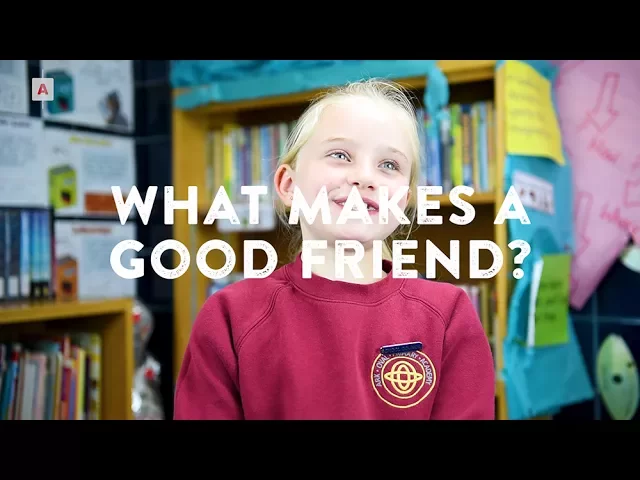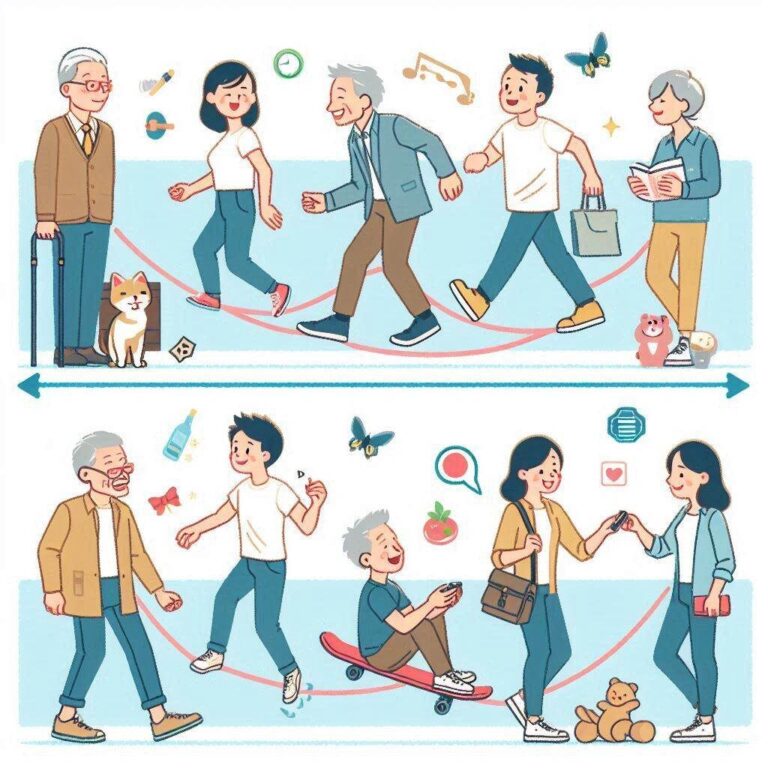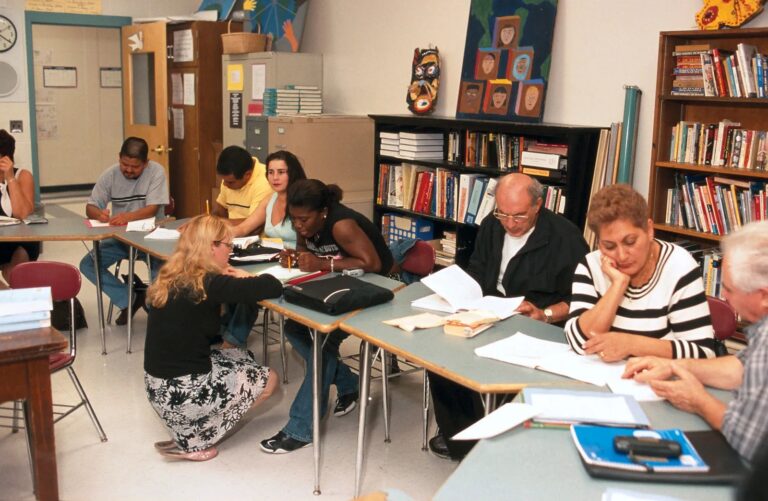2025-04-25 Creative Survival Story!
Lesson Title: Desert Island Dilemma: A Creative Survival Story
Lesson Overview:
- Target Audience: CEFR B1 Japanese Adults (Middle-aged/Older), Same group as April 18th.
- Time: 90 minutes
- Topic: Creative problem-solving, collaborative narration, description, justification.
- Main Goal: To enable students to collaboratively create and narrate a survival story, practice developing character backgrounds, justify the creative use of unusual items to overcome challenges, and present their narrative using a range of descriptive language and B1-level discourse strategies for collaboration and narration.
Learning Objectives:
- By the end of this lesson, students will be able to:
- Develop plausible character backgrounds and relevant boat details.
- Evaluate unusual items and justify their creative applications for survival scenarios.
- Collaboratively structure a short narrative sequence, potentially including simple cause/effect.
- Describe character actions and consequences using appropriate B1 vocabulary and relevant tenses (e.g., past simple for narration).
- Present their group’s narrative clearly, summarizing key events and resourceful solutions.
- Actively listen to and comprehend other groups’ narratives.
Target Language:
- Focus: Vocabulary for problem-solving & resourcefulness, phrases for suggesting, justifying, and narrating.
- Phrases/Vocabulary:
resourceful(adj): Good at finding clever ways to do things or solve problems. (e.g., “They had to be very resourceful to make shelter.”)stranded(adj): Left in a place without a way to leave. (e.g., “They were stranded on the island after the storm.”)obstacle(n): Something that blocks you or makes progress difficult. (e.g., “Finding fresh water was their first major obstacle.”)devise(v): To invent a plan or method, often cleverly. (e.g., “They needed to devise a way to signal for help.”)makeshift(adj): Temporary and usually basic, made because of a sudden need. (e.g., “They built a makeshift raft using logs and vines.”)- “What if we used the [item] to…?” (Making suggestions)
- “I suppose we could try using the [item] for…” (Expressing opinion/suggestion)
- “The main challenge /
obstacleis…” (Identifying problems) - “By using the [item] this way, they managed to overcome…” (Narrating solutions & consequence)
- “That’s an interesting idea, but how would we manage to…?” (Polite questioning/clarification)
Materials:
- Whiteboard & Markers
- Projector & Computer
- Google Slides
- Handouts: Creative Survival Story Planner (see content below), List of Unusual Items, Exit Ticket Slips
- Other: Pens for students, small pieces of paper for Exit Tickets.
Lesson Procedure:
- 1. Getting Started (Warm-up) (10 minutes):
- Purpose: Engage students, activate thinking about problem-solving and personal qualities, introduce the context of being
stranded. - Activity: Valuable Personal Qualities
- 1. Write the question: “Imagine you were
strandedsomewhere challenging (like a desert island or remote mountains). What personal quality or skill do you possess that would be most valuable for survival? Why would it be valuable?” on the board/slide. - 2. Give students 30-45 seconds to think individually.
- 3. Put students in pairs or small groups (2-3).
- 4. Ask them to share their quality/skill and explain the reason it would be helpful. Encourage brief follow-up questions (“That’s interesting, how would being [quality] help in that situation?”).
- 5. After 5-7 minutes, briefly ask one or two students to share a quality their partner mentioned and the reason it was valuable. Introduce/elicit
resourcefulif it comes up naturally or related ideas are shared.
- 1. Write the question: “Imagine you were
- CCQs: “Are you talking about an item or a personal quality/skill?” (A quality/skill). “Should you explain why it’s valuable?” (Yes). “Are you working alone or discussing with a partner/group?” (Discussing).
- Purpose: Engage students, activate thinking about problem-solving and personal qualities, introduce the context of being
- 2. Introducing the Challenge (15 minutes):
- Purpose: Introduce the lesson scenario (
shipwreck,desert island), the core task (collaborative story creation), the concept of overcomingobstaclesusingresourcefulthinking, and the presentation requirement. Introduce target B1 language. - Activity: The Desert Island Dilemma
- 1. Show image of shipwreck near an island. “Okay, building on our warm-up, imagine you were on a ship… but there was a problem. You’re now
shipwreckedandstrandedon this desert island.” - 2. Introduce the main task: “Today’s challenge is to work in groups and create a short story about survival on this island. You’ll need to be
resourceful!” - 3. Introduce the story elements (write on board/slide):
- Characters: Your group members are the characters. Develop a brief
backstoryfor each (Who are they? Key skill/personality? Why on the boat?). - The Voyage: Briefly decide: What kind of boat? Where was it going? Any problems before the shipwreck?
- The Discovery: You find a box that
washed ashore. Inside are several unusual items (NOT standard survival gear!). - The Narrative: How do your characters
deviseresourcefulways to use these unusual items to overcomeobstacles(problems/challenges) they face on the island? What happens as a result?
- Characters: Your group members are the characters. Develop a brief
- 4. Explain
resourcefuluse with an example (e.g., Umbrella: “Using it normally is for rain/sun. But being resourceful might mean youdevisea way to use it upside down to collect water, or use the handle to dig, or the fabric to make amakeshiftbag.”). Emphasize clever, non-obvious uses. - 5. Explain the output: “After creating your story outline, your group will present it briefly to the class. You can summarize the key events and how you overcame
obstacles.” (Focus shifts slightly from reading/role-play to summarizing). - 6. Introduce the Target Language (Vocabulary & Phrases) on the board/slide. Give brief examples or context for each. (“When you suggest an idea, you could say ‘What if we used the X to…?'” “If something is difficult, it’s an
obstacle.”)
- 1. Show image of shipwreck near an island. “Okay, building on our warm-up, imagine you were on a ship… but there was a problem. You’re now
- CCQs: “Are you creating the story alone or collaborating with your group?” (Collaborating). “Are the items in the box normal survival tools?” (No, unusual). “Do you need to think of normal uses or
resourcefuluses for the items?” (Resourceful/clever uses). “What’s another word for a problem or challenge you need to overcome?” (Obstacle).
- Purpose: Introduce the lesson scenario (
- 3. Let’s Talk! (Story Creation & Planning) (50 minutes):
- Purpose: Facilitate collaborative story development, focusing on problem-solving, justification, negotiation, and planning the narrative presentation using B1 language. Maximize STT.
- Activity: Collaborative Story Workshop
- 1. Divide students into small groups (2 or 3 students preferred for balance; 4 is okay but monitor participation). Match group size to the number of characters needed.
- 2. Distribute the “Creative Survival Story Planner” handout and the “List of Unusual Items” handout.
- 3. Instructions (Guide them through the planner):
- a. Characters (5-7 min): Each person develops ONE character
backstory. Focus on personality/skill and reason for travel. Write brief notes on the handout. - b. The Voyage (3-5 min): Briefly discuss and note the boat type, destination, and maybe one challenge before the main shipwreck.
- c. The Discovery – Items (5-7 min): Look at the “List of Unusual Items”. As a group, choose 3-5 items. Discuss why you chose them (maybe they seem challenging or interesting?). Write them on the handout.
- d. The Narrative – Overcoming
Obstacles(20-25 min): This is the core. Identify 2-3 keyobstaclesyour characters face (e.g., finding water, shelter, signaling help, getting food). Discuss how they coulddeviseresourcefulways to use your chosen items to overcome these challenges. How does using one item lead to the next step or solve a problem? Use sequence words and try to use the target phrases/vocab. Write notes on the handout outlining the main steps (Obstacle -> Creative Use -> Result). - e. Plan Presentation (10 min): Discuss how you will summarize your story. Who will explain which part? Focus on clearly stating the
obstaclesand theresourcefulsolutions your groupdevised. Practice the summary briefly. Ensure everyone speaks.
- a. Characters (5-7 min): Each person develops ONE character
- 4. Circulate actively. Monitor discussions, focusing on their reasoning and explanations. Prompt for justification (“Why did you choose that item?” “How exactly would using the spaghetti help?”). Encourage use of target language. Gently guide turn-taking if needed. Note B1-level errors for delayed correction. Provide vocabulary support if needed for specific ideas.
- 5. Time Check: Give clear time warnings (“You have about 15 minutes left to plan your narrative!”, “Okay, 5 minutes left! Start planning your summary!”). Be firm but encouraging about moving to the presentation stage. “Okay everyone, please finish your planning notes now.”
- CCQs: “How many characters does each person create?” (One). “When you choose the items, should you think about why you chose them?” (Yes, briefly). “In the story part, what do you need to identify first?” (
Obstacles/challenges). “Should you explain how the items help overcome the obstacles?” (Yes). “For the presentation, will you read every detail or summarize?” (Summarize).
- 4. Wrapping Up (Review & Feedback) (15 minutes):
- Purpose: Allow groups to share their creative narratives, practice summarizing, consolidate B1 language, apply error correction, gather feedback.
- Activities:
- 1. Narrative Sharing (Approx. 3-4 min per group): Invite each group to stand (or sit at the front) and briefly summarize their story. Encourage them to highlight the main
obstaclesand theresourcefulways theydevisedto use the items. Applaud each group. Ensure presentations are concise to fit time. - 2. Error Correction Slot: Address 3-5 common B1-level errors or positive examples observed during the activity (e.g., use of past simple for narration, modals for suggestion, pronunciation of target vocab, sentence structure for explaining cause/effect). Use your delayed correction method on the board.
- 3. Final Q&A: Ask if students have questions about the language used or the activity.
- 4. Exit Ticket: Distribute the paper questionnaire. Explain its value. Give them a few minutes. Collect tickets.
- 1. Narrative Sharing (Approx. 3-4 min per group): Invite each group to stand (or sit at the front) and briefly summarize their story. Encourage them to highlight the main
Instructor Guidance & Notes:
- Error Correction Strategy: Delayed correction. Focus on B1 target language use, narrative tenses (past simple), modals, and clarity of explanation. Praise effort and especially
resourcefulideas. - Cultural Sensitivity: Foster a supportive, collaborative atmosphere. Emphasize that all creative solutions are welcome. Applaud presentations warmly.
- Flexibility: Timings are guides. The core is the collaborative narrative planning (Activity 3d). Adjust slightly if needed, but ensure sufficient time for all groups to present and for wrap-up/feedback.
- Quality over Quantity: Focus on the process of collaborating, problem-solving, justifying ideas, and using the target B1 language, rather than a perfect, long story. Clear summaries are the goal for presentation.
- Technology Note: Slides guide the activity flow and present language. Core work is group discussion + handout.
- Managing Dynamics/Differentiation: Small groups help manage dominance. The structured planner gives everyone input. For stronger B1 students, encourage them to use more complex sentences or add more descriptive detail during planning. For those needing more support, focus on understanding the core task and using the provided phrases. Speak clearly and check understanding. Encourage the positive atmosphere. Give clear goals via the planner structure.
- Vocabulary Goal: Remind students that this activity introduces useful B1 vocabulary for problem-solving and description.
Suggested Supporting Materials Content:
- Creative Survival Story Planner Handout: (Print one copy per group)
- Your Desert Island Dilemma!
- Group Members: _____________
- Work together to devise a resourceful survival story!
- 1. Your Characters: (Each person develops ONE character background)
- Character Name: ___ Background (Personality/skill? Reason for voyage?):
_____________________________________________________
- Character Name: ___ Background (Personality/skill? Reason for voyage?):
- Character Name: ___ Background (Personality/skill? Reason for voyage?):
_____________________________________________________
- Character Name: ___ Background (Personality/skill? Reason for voyage?):
- (Add lines if 3-4 people in group)
- Boat Type & Destination: _____________________________
- Any challenges before the shipwreck? (Optional, brief) _____
- Look at the “List of Unusual Items”. Choose 3-5 items. Briefly discuss why you chose them.
- Our Chosen Items:
- ____________________________________________________ (Optional)_____________ (Optional)
Obstacles:- Identify key challenges (
obstacles). How did your charactersdeviseresourcefulways to use the items? Describe the actions and results. Use sequence words (First, Next, Then, Finally…).
- Our Chosen Items:
Obstacle1: ________________________________________- Creative Solution (Which item? How used?): ___________
- Result: ____________________________________________
Obstacle2: ________________________________________- Creative Solution (Which item? How used?): ___________
- Result: ____________________________________________
Obstacle3: (Optional) _______________________________- Creative Solution (Which item? How used?): ___________
- Result: ____________________________________________
- Focus: Main
obstacles&resourcefulsolutions. - Notes: _____________________________________________
- List of Unusual Items Handout:
- (Print one copy per group)
- Unusual Items List
- Choose 3-5 items from this list to put in your box. How can your characters use them in surprising ways?
- A large, deflated rubber boat (with no pump)
- A single, roller skate
- A box of dry spaghetti
- A very large magnifying glass
- A tangled ball of string (very long)
- A broken computer keyboard
- A dictionary (English to a language nobody knows)
- A bag full of different sized bottle caps
- One large, heavy metal spoon
- A small, empty bird cage
- A bright red plastic bucket (with holes)
- A collection of old newspapers (very dry)
- A single, large, fluffy feather
- A music box that only plays one tune
- A long, thin piece of rubber hose
Google Slides Outline:
- Slide 1: Title: Desert Island Dilemma: A Creative Survival Story
- Slide 2: Warm-up: Stranded! Your Most Valuable Quality? Why? (Image: Person thinking resourcefully)
- Slide 3: Today’s Challenge: Collaborative Survival Narrative (Image: Shipwreck near island)
- Slide 4: Story Element 1: Characters & The Voyage (Prompts from handout)
- Slide 5: Story Element 2: The Discovery – Unusual Items! (Show list link/examples)
- Slide 6: Key Concepts:
Obstacles&ResourcefulSolutions (Explain terms with examples – e.g., umbrella) - Slide 7: Target Language: (List key vocab:
resourceful,stranded,obstacle,devise,makeshift& key phrases for suggestion/justification/narration) - Slide 8: Story Element 3: Devising Your Narrative (Explain task: Identify obstacles -> Devise solutions -> Describe results)
- Slide 9: Your Planner Handout (Show image of the revised planner sections)
- Slide 10: Group Work Time! Develop Your Story! (Image: Group collaborating intently)
- Slide 11: Story Element 4: Plan Your Summary Presentation (Focus on key points, roles)
- Slide 12: Time Check / Presentations Soon! (Image: Clock)
- Slide 13: Narrative Sharing Time! (Image: Group presenting ideas clearly)
- Slide 14: Error Correction / Q&A (Space for notes)
- Slide 15: Thank You! Exit Ticket Time. (Image: Paper/pencil, maybe with a checkmark)
Exit Ticket Questions (For Paper Handout):
- 1. What part of today’s lesson did you enjoy the most?
- 2. Was today’s lesson: (Circle one) Too Difficult / Just Right / Too Easy ?
- 3. Was the new vocabulary (
resourceful,obstacle, etc.) today: (Circle one) Too Difficult / Just Right / Too Easy ? - 4. Did you feel your group worked well together (
collaborated)? (Yes / Mostly / Could be better) - 5. Any other comments or suggestions? (Optional: English or Japanese)
(Note: Added specific vocab check and collaboration check)
Optional At-Home Activities (Low Instructor Effort, B1 Appropriate):
- 1. Extend the Story: Write a short paragraph (3-5 sentences) describing another
obstacleyour characters might face later and how they coulddevisearesourcefulsolution using one more unusual item (from the list or your imagination). - 2. Real-Life Survival: Find a short news article or blog post (in English) online about a real-life survival situation. Try to identify the main challenges (
obstacles) faced and oneresourcefulaction taken. (Suggest search terms: “survival story news”, “resourceful rescue real life”).
Lesson Plan for Students:
- Lesson Topic: Desert Island Dilemma!
- What we will do: Get ready for a creative challenge! This week, we’ll imagine being
strandedafter ashipwreck. Working in groups, we will develop characters anddevisea story about how they overcomeobstaclesusing unusual items inresourcefulways. We’ll practice collaborating and presenting our survival narratives. - Key Phrases/Vocabulary: We’ll focus on vocabulary like
resourceful,obstacle,devise,makeshift, and practice phrases for suggesting ideas, explaining challenges, and narrating solutions. - Handouts: We will use a planner handout to structure our story and choose items.
- See you in class for some problem-solving fun!
Featured Image Prompt for Blog Post:
- Warm, engaging illustration of a diverse group of Japanese adults (middle-aged/older) actively collaborating around a table, pointing at a planning sheet. Background subtly shows a stylized desert island with a few unusual items (e.g., keyboard, bottle caps). Speech bubbles contain simple English phrases like “What if we…?”, “Good idea!”, “Obstacle?”, conveying teamwork, level communication, and creative problem-solving. Friendly, supportive atmosphere.
Blog Post Excerpt:
- Ready for a creative challenge? This week, we’ll tackle a desert island dilemma! Practice collaborating, problem-solving, and narrating events using key vocabulary like
resourcefulanddevise. Let’s invent survival stories together and boost our speaking skills!







